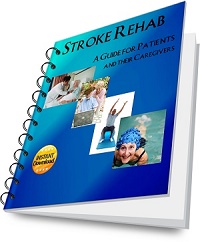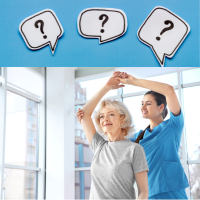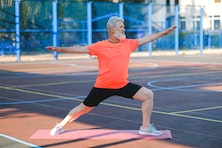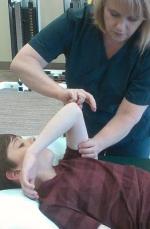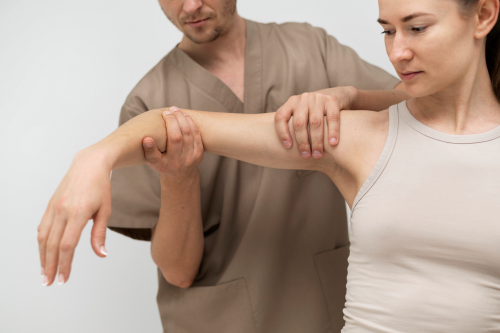Bowel and Bladder Incontinence
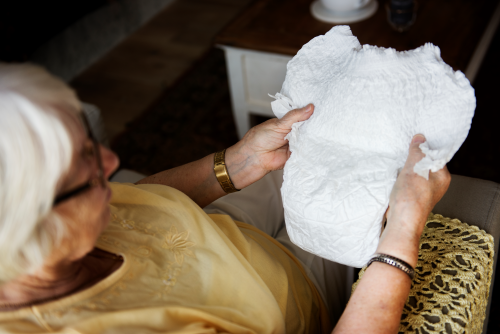 Image by rawpixel.com on Freepik
Image by rawpixel.com on FreepikBowel and bladder incontinence is common after stroke and is often indicative of the severity of stroke. Incontinence is the inability to control urinary and bowel function and often impacts where a patient will be discharged when leaving the acute hospital. Stroke patients with incontinence are less likely to be discharged to home and are more likely to be discharged to another facility for continued care.
Studies show that stroke survivors that are continent the first few days after stroke have a much lower mortality rate in comparison to those who experience bowel and bladder incontinence. Incontinence negatively affects stroke patients and often increases the burden on caregivers. Control of bowel and bladder improves for the majority of stroke survivors with time but some will remain incontinent.
Incontinence may be due to stroke in part of the brain affecting bowel and bladder function or it may be a side effect that is due to other factors such as physical disability (patient is unable to physically get to the bathroom), aphasia and cognitive problems (stroke patient may be unable to communicate that he or she needs to use the bathroom), or ataxia. Stroke may worsen incontinence for stroke patients who were already experiencing bladder or bowel dysfunction prior to stroke. This may be especially true for elderly stroke victims since there is a higher incidence of urinary dysfunction in the elderly population. Drugs given post stroke can also be a factor in incontinence.
Bowel and Bladder Incontinence Treatment
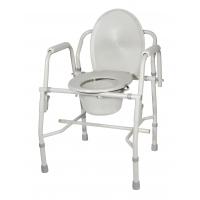
Initially, the stroke victim who is incontinent may receive an indwelling catheter (a small flexible tube is inserted in the urinary tract and urine is collected in a bag). Treatments after the catheter is removed may include a toileting schedule, medication, bladder retraining, behavioral therapy, use of adaptive equipment, improving physical mobility, and improving speech and cognition.
There are limited studies on the effectiveness of treatments for incontinence after stroke, but the following are some tips to help with bladder/bowel retraining and incontinent episodes:
- Establish a toileting schedule (i.e. - set a timer for every 2 hours to go to the bathroom which helps train the bowel and bladder)
- Improve physical mobility and transfers to the toilet (an occupational therapist can address this during therapy sessions)
- If mobility is an issue, invest in adaptive clothing which allows for clothing to be changed from a seated position.
- Work on improving communication so that the stroke patient can express the need to go to the bathroom (a speech therapist can help with this)
- Devise a communication method between caregiver and stroke patient if the patient is unable to verbalize the need to urinate (i.e. a bell or calling system)
- Practice Kegel exercises which strengthen the pelvic floor.
- Use a bedside commode to make it easier to get to the bathroom quickly at night
- Ask your physician about medications for overactive bladder
- Examine medications with your M.D. to make sure they are not causing urinary or bowel problems
- Notify your caregiver of the need to urinate or move your bowels as soon as it comes on - waiting can lead to accidents.
- Limit fluids in the evening before bed
- Limit caffeine
- Use disposable undergarments or pantiliners
- Purchase washable waterproof pads for use on beds or furniture (furniture covers can be used over the pads to make them less conspicuous)
- Carry an extra set of clean garments when leaving the house (keep extra set in car at all times)
- Schedule extra time for outings due to more frequent restroom breaks
- Carry wipes and hand sanitizer with you at all times
Incontinence Products
You can find incontinence products online and some supplies at big box stores as well.
As an Amazon Associate I earn from qualifying purchases.
Incontinence Resources
For more info on incontinence, visit the National Association for Incontinence website at www.nafc.org.
Newsletter Sign Up
Receive Stroke Recovery Tips, our online quarterly newsletter. Sign up below for free tips on exercises, resources, latest technology, apps, research and more!
To view past issues of Stroke Recovery Tips, visit https://www.stroke-rehab.com/Stroke-Recovery-Tips-BackIssues.html
As an Amazon Associate I earn from qualifying purchases.
- Home
- Bowel and Bladder Incontinence
Recent Articles
-
How to Make Neuroplasticity Repeatable On Demand
Submission from reader: Neuroplasticity is widely touted as a way for stroke survivors to recover. To make it repeatable on demand, what exact signal is -
Only Plays Internet Games and Nothing Else Three Years Post Stroke
Question: I know playing games for up to 8 hours on the internet is not healthy for anyone. Does anyone know how sitting all day long playing games on -
Sadness After Stroke
I Get Sad Question:I get so sad at times like I lost the old me, I was very active and now I’m not, I’ve had a complete meltdown and just sobbed. Answer: -
More damage done to paralyzed left arm as a result of carelessness.
Question: My husband suffered a stroke which caused his entire left side with no feeling or movement. Recently, my husband possibly could have been turned -
Shouting, Confusion, and Anger After Stroke
Question from reader: My mom had a stroke about a month ago. Physically she is improving, but she has bouts of anger, confusion (says weird things), and -
Cloudy vision after stroke
Question: My mother had a stroke 1 yr ago. It caused partial loss of vision on her right side. During a 4 day road trip, her vision would get cloudy and -
Flaccid Paralysis After Stroke
Learn about stroke treatment for flaccid paralysis after stroke. -
Vision Problems After Stroke
Answers to patients' questions about vision problems after stroke and treatment. -
Symptoms Getting Worse After Stroke
If you experience sudden declines or changes after stroke, you should seek medical attention. -
Flaccid Paralysis Treatment After Stroke: Questions and Answers
Answers to questions about flaccid paralysis treatment after stroke including home exercises and treatment ideas.
![Chucks Pads Disposable [50-Pack] Underpads 23x36 Incontinence Chux Pads Absorbent Fluff Protective Bed Pads, Pee Pads for Babies, Kids, Adults & Elderly | Puppy Pads Large for Training Leak Proof](https://m.media-amazon.com/images/I/51Xgn29yo7L._SL160_.jpg)




